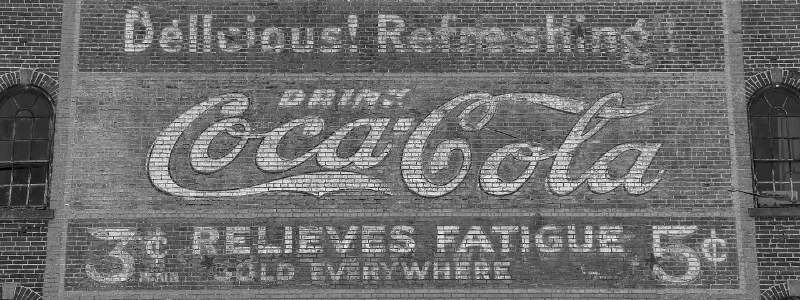In the vast landscape of advertising, few elements stand as tall, both literally and figuratively, as billboards. These towering structures have been an integral part of our visual surroundings for centuries, evolving from ancient inscriptions to digital marvels. In this blog, we will delve deep into the fascinating world of billboards, uncovering intriguing facts that span their ancient origins, global impact, technological innovations, and even their foray into the realm of art.
1. Ancient Origins
To truly appreciate the significance of billboards, we must journey back to ancient Egypt, where the concept of outdoor advertising first took root. The first known billboard appeared around 3000 years ago and it was advertising a reward for the return of a runaway slave. In a world devoid of digital screens and high-speed transportation, early advertisers chiselled announcements onto stone tablets, strategically placing them along high-traffic areas. These rudimentary billboards served as the precursors to the vibrant, attention-grabbing structures we encounter in today’s urban jungles.
2. The Birth of Billboards
It is believed that Jared Bell created the first billboard in the United States in the 1830s. He created large signs for shows and events, such as circus to grab attention of large audiences. Early billboards were very labour intensive, had to be hand painted and took days to create. In the 1860s laws were created that allowed businesses to buy spaces to install billboards. The proliferation of billboards leads to the formation of various billboard associations, which then lead to the development of standards for billboard advertising. In the late 1800s a twenty-four-poster billboard was launched, and this size became the standard in the United States and abroad.
3. The Billboard Boom of the 20th Century
As the automotive industry gained momentum in the early 20th century, billboards proliferated along highways, transforming the American landscape, and establishing themselves as powerful vehicles for conveying messages to a mobile audience. In the mid 1900s Interstate Highway System was created and as highways crisscrossed the nation, billboards became an integral part of the American experience. Billboards became extremely popular, they not only promoted consumer products but also became cultural touchstones. From the iconic “See Rock City” ads urging travellers to explore the natural wonders to the emergence of illuminated signs in Times Square, billboards became synonymous with the cultural and commercial vibrancy of the 20th century.
4. Safety Concerns and Regulations
For decades, billboard positioning was unregulated, so essentially could be any size, placed anywhere and so forth. So, while they were effective in capturing attention, they also faced criticism and safety concerns related to driver distraction. To strike a balance between the visual impact of billboards and road safety, regulations governing their placement and content were enacted. These guidelines aim to ensure that billboards do not compromise the attention of drivers, thus navigating the delicate intersection between effective advertising and public safety. In the late 1960s the Highway Beautification act was enacted which set limitations on the number of billboards that could be placed on the highway, the distance between them, the distance from the road edge, lighting conditions and so on.
5. Digital Billboards
The digital revolution ushered in a new era for billboards. The once static structures transformed into dynamic, high-tech marvels capable of displaying a spectrum of messages. With the advent of digital billboards, advertisers gained unprecedented flexibility. Messages could now change in real-time, adapting to specific times of day or responding to current events. This technological leap not only heightened the visual impact of billboards but also introduced a level of adaptability previously unseen in outdoor advertising. However, digital billboards are not suitable in all situations. They work well in a central business district or a densely populated city centre, but further away from the city centre, in a natural green space they do not blend very well with the environment.
6. Art in the Open
In a delightful twist, billboards have transcended their commercial origins to become platforms for public art installations. Cities around the world have embraced the idea of turning billboards into curated spaces for artistic expression. These dynamic installations not only captivate audiences but also challenge traditional notions of outdoor advertising by seamlessly blending commerce with culture. The billboard, once a symbol of commerce, now becomes a canvas for artistic exploration and public engagement. Sounds and scents have also been added to billboards to create another dimension in customer experience.
7. Interactive Billboards
The integration of technology has taken interactive billboards to new heights, transforming the passive act of viewing into an immersive and participatory experience. Touch-sensitive displays, augmented reality applications, and interactive content enable passersby to engage with billboards in real-time. This not only captures attention but also fosters a deeper connection between the audience and the brand, transforming the traditional billboard into a two-way communication tool. Imagine walking into a mall, the billboard recognises you, knows that you searched for a fridge recently, changes the display to show you refrigeration advertisements from the mall. Of course, there will be regulatory hurdles to cross with privacy of information and so on, but that is where we are heading.
Billboards, with their rich history and ever-evolving nature, stand as testaments to the enduring power of visual communication. From their ancient origins to the digital age, billboards have evolved into dynamic structures that not only convey messages but also serve as cultural touchstones and platforms for artistic expression. As we navigate the future, billboards continue to shape our visual landscape, telling stories, engaging audiences, and bridging the gap between commerce and culture. In a world inundated with messages, the billboard remains a towering symbol of communication, inviting us to look up and be captivated by the stories they tell.


Recent Comments